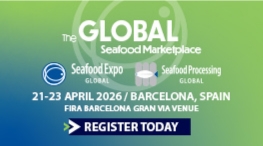The Commission has made available a report on “Fishers of the Future,” an ambitious analysis undertaken during 2024 and culminating in a public presentation on 14 January 2025. The European Commission has produced a report evaluating the possible life an EU fisher could face by the year 2050 under four possible scenarios regarding two broad forces at work during the next 25 years: climate and biodiversity changes in marine ecosystems, and consumer demand within market dynamics. The four scenarios examined for the study compare positive or negative developments attributable to these two forces. One is climate and diversity changes that leave fish stocks in EU waters relatively unscathed versus changes that drive fish stocks out of fishers’ reach. The other is consumer demand that increasingly favours EU-caught fish versus demand that increasingly finds EU-caught fish too costly or otherwise undesirable.
One way to visualise the four resulting scenarios is with a 2 by 2 box, with “good, good” and “bad, bad” scenarios in opposing corners and two “good, bad” and “bad, good” scenarios in the other opposing corners. For example, the “good, bad” scenario is where a response to climate change has little effect on fish stocks (good) but consumers turn away from EU-landed fish (bad); by the year 2050, fishermen will find plenty of fish to harvest but no market for their catch. In the “bad, good” scenario, by 2050 consumer demand for EU fish is still strong but climate change has severely weakened EU fish stocks and there are few fish to catch. The report’s conclusions suggest that all scenarios are currently possible, but with the right policy adjustments the “bad” outcomes are avoidable. The authors prescribe policies that fund research into technological and green transition by the fish industry, policies that strengthen fish industry competitiveness by promoting local markets and fish traceability to differentiate EU-caught fish and their products, policies that encourage workforce renewal through improved working conditions and gender inclusivity, and policies that expand aquaculture as an alternative to traditional fisheries. In all these ways, the authors say, a “good, good” scenario by 2050 becomes more likely.
The document can be read here: https://oceans-and-fisheries.ec.europa.eu/fishers-future_en









